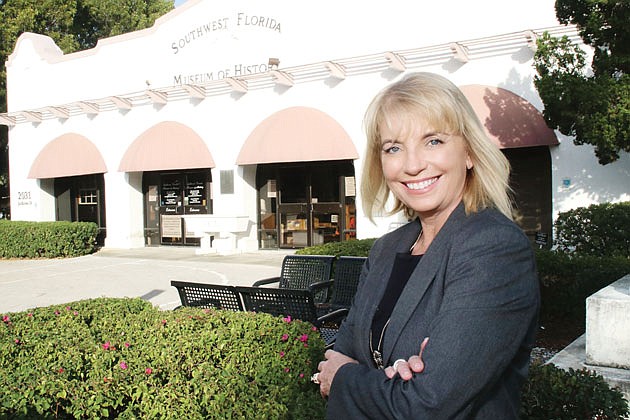- November 24, 2024
-
-
Loading

Loading

A successful eight-week push to match a $2.5 million endowment donation has erased worries of a struggle ahead in funding programs and collaborations for a regional technology hub in Fort Myers.
The $5 million is projected to give the Southwest Florida Community Foundation, sponsor of the conversion of the Atlantic Coast Line train depot, about $250,000 annually through a 4.1% draw from the endowment, says foundation CEO Sarah Owen. The nonprofit community development organization manages $100 million in assets in its five counties — Lee, Collier, Charlotte, Hendry and Glades.
The project has $3 million from federal tax credits and $7 million from other sources to take care of the renovation and fixtures and a new adjoining building, she adds. The collaboration center and the new building, which will house foundation offices, are scheduled to open by the end of next summer.
“The $5 million will support the actual programmatic work,” Owen says. “This is a space designed for collaboration technology and bringing people together to solve regional problems.”
Owen began work on program development soon after work began on the nearly century-old, 8,000-square-foot depot at 2031 Jackson St. and construction of an adjoining 10,000-square-foot building. “You don't want the programmatic work to stall out,” she says.
These efforts, Owen says, are designed to bring everyday people across the region together for collaboration with professionals in technology and other fields. “We want to create a collaboration accelerator powered by technology,” Owen noted in a previous interview.
Fort Myers city officials also believe in the hub project. That's why the center's midtown location is the starting point for a $36 million, 40-block replacement of utilities and roadways, in addition to new streetscaping. The hope is the enhancements will bring new commercial and residential development and make midtown an attractive extension of the revitalized downtown.
The collaboration center project's recent good fortune started with a proposition from real estate developer David Lucas and his wife, Linda. The couple would give $2.5 million if the foundation could match it with other donations. “The clock was ticking,” Owen says, but “we are fundraisers. That's what we do.”
The Spanish mission-style train depot closed in 1971 when the Seaboard Coast Line left. A new life came in 1982 with conversion of the station into the Southwest Florida History Museum. That era ended earlier in 2017, with the departure of the museum to the Imaginarium, a few blocks east.
The tech hub that will fill the space next will sit on a 3-acre campus. The transformed depot will include office space, drop-in space, podcast booths, high-tech presentation rooms and other features designed to assist nonprofits, civic organizations, local governments and economic development entities in the Community Foundation's five counties.
The job of ensuring the depot kept its old-time train station exterior while creating an interior suited for state-of-the-art technology fell to architect Jeff Mudgett. He's with Parker/Mudgett/Smith Architects, a Fort Myers firm with a list of historic preservation projects that includes the Lee County Courthouse, the Burroughs Home and the Liles Hotel.
The design, Mudgett says, pays “homage to the historic nature” of the depot. He says the ultra-modern building that is going up behind the depot and connected by an exterior portico is designed to ensure no one will confuse what is there with what is built new. Says Mudgett: “We actually took a portion of that portico back to what it was when there was a functioning train station.”